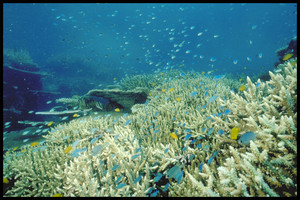To provide observations and information on the emerging fields of landscape scale conservation, heritage preservation, and sustainable community development.
Newsletter
Stay up-to-date with the latest nature, culture and community news.
We won’t spam you or share your information. Newsletters are sent approximately 10 times a year. Unsubscribe at any time.

Compare and Contrast: ICOMOS General Assembly and World Parks Conference
Last month (November 2014) was a very busy moment for World Heritage. At almost the same time, but half way around the globe, ICOMOS held their 18th triennial General Assembly in Florence Italy and IUCN held their once in a decade congress World Parks Congress in Sydney Australia. A few enterprising individuals managed to make an appearance at both meetings, but as is often the case the forces of culture and the forces of nature were far, far apart.

Reading the Tea Leaves: What can we learn from Australia and Canada?
Do the recent midterm elections in the United States signal a change in the nation’s heritage policies? To read the tea leaves, we might look to the fate of parks and heritage conservation programs in Australia and Canada – where conservative governments have recently been in power. In the past, both countries had a track record of innovative heritage programs – developing world class historic sites, new approaches to the recognition of indigenous cultural values and strong interpretation of history and nature. So what has been the impact of the fiscal belt tightening of Prime Minister Tony Abbott of Australia and Prime Minister Stephen Harper of Canada?

National Heritage Areas at Thirty: Help tell the Story
2014 marks the 30th anniversary of the National Heritage Areas program. Conceived as a way to cross the culture – nature divide, heritage areas stretch beyond political boundaries to tell landscape scale histories and protect regional environmental resources. The areas tell stories that are too big, too gritty, too alive and too expensive to be confined within a traditional national park unit. Yet, heritage areas have been consistently hammered by shrinking federal budgets, questions about the proper role of government, and even their right to exist. Read more about how the LLO plans to mark this important anniversary.
Anne of Green Gables – A Novel inspires Landscape Conservation
The children’s novel Anne of Green Gables (1908) attracts a worldwide audience to the book’s setting Canadian Maritime Province of Prince Edward Island. The book has sold more than 50 million copies and has been translated into 47 languages. Learn more about how the evocative landscapes of the text are managed today.

National Conference Celebrates Innovative Large Landscapes Programs
At the recent National Workshop on Large Landscape Conservation, attendees took time to celebrate the anniversaries of two ground-breaking large landscape projects – National Heritage Areas and the Yellowstone to Yukon Conservation Initiative.

Compare and Contrast: ICOMOS General Assembly and World Parks Conference
Last month (November 2014) was a very busy moment for World Heritage. At almost the same time, but half way around the globe, ICOMOS held their 18th triennial General Assembly in Florence Italy and IUCN held their once in a decade congress World Parks Congress in Sydney Australia. A few enterprising individuals managed to make an appearance at both meetings, but as is often the case the forces of culture and the forces of nature were far, far apart.

Reading the Tea Leaves: What can we learn from Australia and Canada?
Do the recent midterm elections in the United States signal a change in the nation’s heritage policies? To read the tea leaves, we might look to the fate of parks and heritage conservation programs in Australia and Canada – where conservative governments have recently been in power. In the past, both countries had a track record of innovative heritage programs – developing world class historic sites, new approaches to the recognition of indigenous cultural values and strong interpretation of history and nature. So what has been the impact of the fiscal belt tightening of Prime Minister Tony Abbott of Australia and Prime Minister Stephen Harper of Canada?

National Heritage Areas at Thirty: Help tell the Story
2014 marks the 30th anniversary of the National Heritage Areas program. Conceived as a way to cross the culture – nature divide, heritage areas stretch beyond political boundaries to tell landscape scale histories and protect regional environmental resources. The areas tell stories that are too big, too gritty, too alive and too expensive to be confined within a traditional national park unit. Yet, heritage areas have been consistently hammered by shrinking federal budgets, questions about the proper role of government, and even their right to exist. Read more about how the LLO plans to mark this important anniversary.
Anne of Green Gables – A Novel inspires Landscape Conservation
The children’s novel Anne of Green Gables (1908) attracts a worldwide audience to the book’s setting Canadian Maritime Province of Prince Edward Island. The book has sold more than 50 million copies and has been translated into 47 languages. Learn more about how the evocative landscapes of the text are managed today.

National Conference Celebrates Innovative Large Landscapes Programs
At the recent National Workshop on Large Landscape Conservation, attendees took time to celebrate the anniversaries of two ground-breaking large landscape projects – National Heritage Areas and the Yellowstone to Yukon Conservation Initiative.


